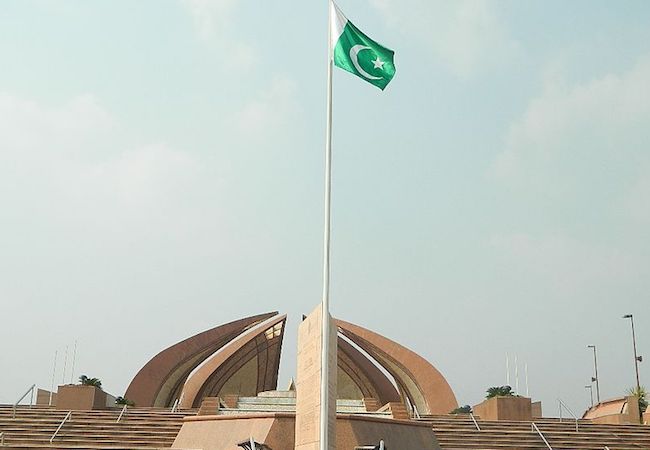Pakistan’s credible minimum nuclear deterrence in the contemporary regional context

By Haris Bilal Malik
The overt nuclearization of the South Asian region in 1998 was the outcome of the Indian long-held desire to dominate the region and challenge Pakistan’s security. Being threatened by this, Pakistan was compelled to follow the same suit. It became more of a strategic obligation for Pakistan to develop its nuclear capabilities given the evolved regional security dynamics. This had primarily balanced the regional equation of nuclear deterrence that exists to date as well. Since then, the existence of nuclear deterrence in South Asia which is primarily ensured by Pakistan’s deterrence posture remains the most significant determinant of the regional strategic balance. However, in recent years, India has been incessantly trying to undermine the strategic parity in the region by challenging Pakistan’s nuclear threshold which covers various spectrums of threats. This is significantly evident from; India’s extensive and provocative military modernization both at the conventional and unconventional levels, self-proclaimed notions of ‘surgical strikes’ and ‘new normal’ under the nuclear scenario, and the gradual shifts in its doctrinal posture. These factors combined have emerged as the most destabilizing factors that have contributed towards challenging Pakistan’s credible minimum nuclear deterrence in the contemporary regional context.
While pursuing a massive military modernization drive, at the unconventional level, India has enhanced its strategic nuclear capabilities with the acquisition of advanced ballistic and cruise missiles that can be launched from land, air, and under the sea. Furthermore, it has indigenously developed ballistic missile defence (BMD) systems along with the S-400 anti-missile system that it has purchased from Russia. This is aimed at the provision of an advanced air defence shield. The nuclear-powered submarines that assure the second-strike capability have further added to the Indian offensive military posture. India has developed supersonic missiles which are operational; while the hypersonic missiles are reportedly under development. Moreover, India has also carried out technological advancements in the domain of space with the acquisition of anti-satellite (ASAT) weapons. These capabilities are aimed at achieving a presence in space for intelligence, reconnaissance, and surveillance (ISR) purposes. In this regard, the recent India-US ‘Basic Exchange and Cooperation Agreement’ (BECA) is also evidence of such offensive posturing against Pakistan. This implies that India’s expansion of its military capabilities is aimed at enhancing the strategic nuclear capabilities vis-à-vis Pakistan.
In recent years, India’s notion of the preemptive first strike also referred to as ‘splendid first strike‘ has gained considerable deliberation within the Indian strategic community. As the Indian security experts have maintained, such a splendid first strike would be based on a nuclear resort. In addition to this, the self-proclaimed phenomena of ‘surgical strikes’ under a nuclear scenario have become part of Indian strategic discourse. This has been portrayed as a ‘new normal’ by the Indian political and strategic elite. India believes that any provocation in line with such notions would not challenge Pakistan’s nuclear threshold. Furthermore, the resultant conflict would likely stay at the sub-conventional or even conventional level only. Inspired by such notions, at the doctrinal level, India has been shifting from its declared policy of ‘No First Use’ (NFU). Especially in the Post- Pulwama environment, this has been witnessed with a deliberate assertion of the Indian Defence Minister. He hinted at a likely shift in India’s declared NFU policy by maintaining that its status would depend on future circumstances. These evolved Indian notions along with its shift in the doctrinal posture further support Pakistan’s already expressed doubts regarding India’s NFU policy. Hence more, this denotes that India has been continuously trying to undermine the deterrent value of Pakistan’s nuclear posture. This would ultimately destabilize the South Asian region.
Pakistan, on the other hand, has been forced to maintain a certain nuclear force posture to reinstate the balance of power in the region. In this regard, Pakistan’s full spectrum deterrence (FSD) that is in-line with the credible minimum nuclear deterrence posture has been a key resort to overcome the conventional and unconventional challenges being posed by India. Pakistan has embarked upon very timely and calculated responses under its missile development program. These include; tactical, intermediate, and long-range delivery systems capable of delivering nuclear warheads. Furthermore, the development of land, sea, and air-based advanced cruise missiles along with the assurance of second-strike capability has further added to Pakistan’s resort to respond. As opposed to India’s blatant NFU policy, which appears barely justifiable and provable at face value, Pakistan has never maintained such an assertion. In this regard, Pakistan has kept its resort of nuclear first strike quite ambiguous. This is aimed at ensuring Pakistan’s security and preserving its sovereignty while staying within a credible and reliable nuclear deterrence doctrine. Such posture implies that Pakistan’s nuclear deterrence is defensive in principle which aims to deter India from taking any aggressive action against Pakistan.
Hence at present, India’s aggressive military modernization along with its hostile notions of ‘surgical strikes’ and ‘new normal’ under nuclear scenarios have posed security threats to Pakistan. India’s expansion of its strategic nuclear capabilities against Pakistan is a clear manifestation of its offensive doctrinal posture. This along with the conventional advantage of India appears to be a more focused attempt to undermine Pakistan’s credible nuclear deterrence. This has created a dangerous environment of strategic stability in the South Asian region. Pakistan, on the other hand, while having limited financial resources and conventional disadvantage vis-à-vis India has always relied on its nuclear capability. The fact remains that Pakistan’s nuclear capability has been able to deter India from any misadventure. In the contemporary regional context, the credible nuclear deterrence of Pakistan would continue to remain an appropriate resort. However, India’s deliberate exertions to challenge Pakistan’s security might provoke a review of doctrinal posture.




